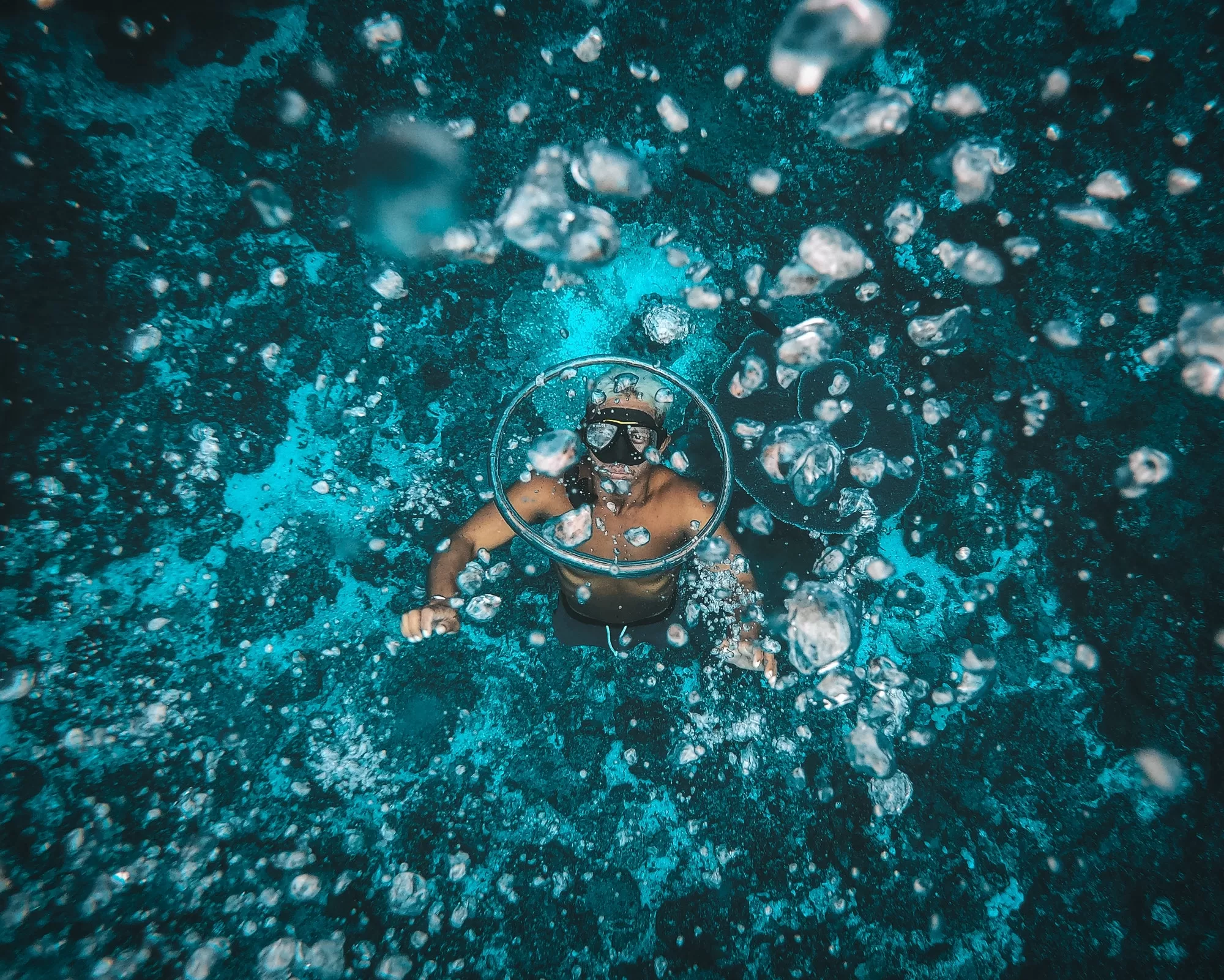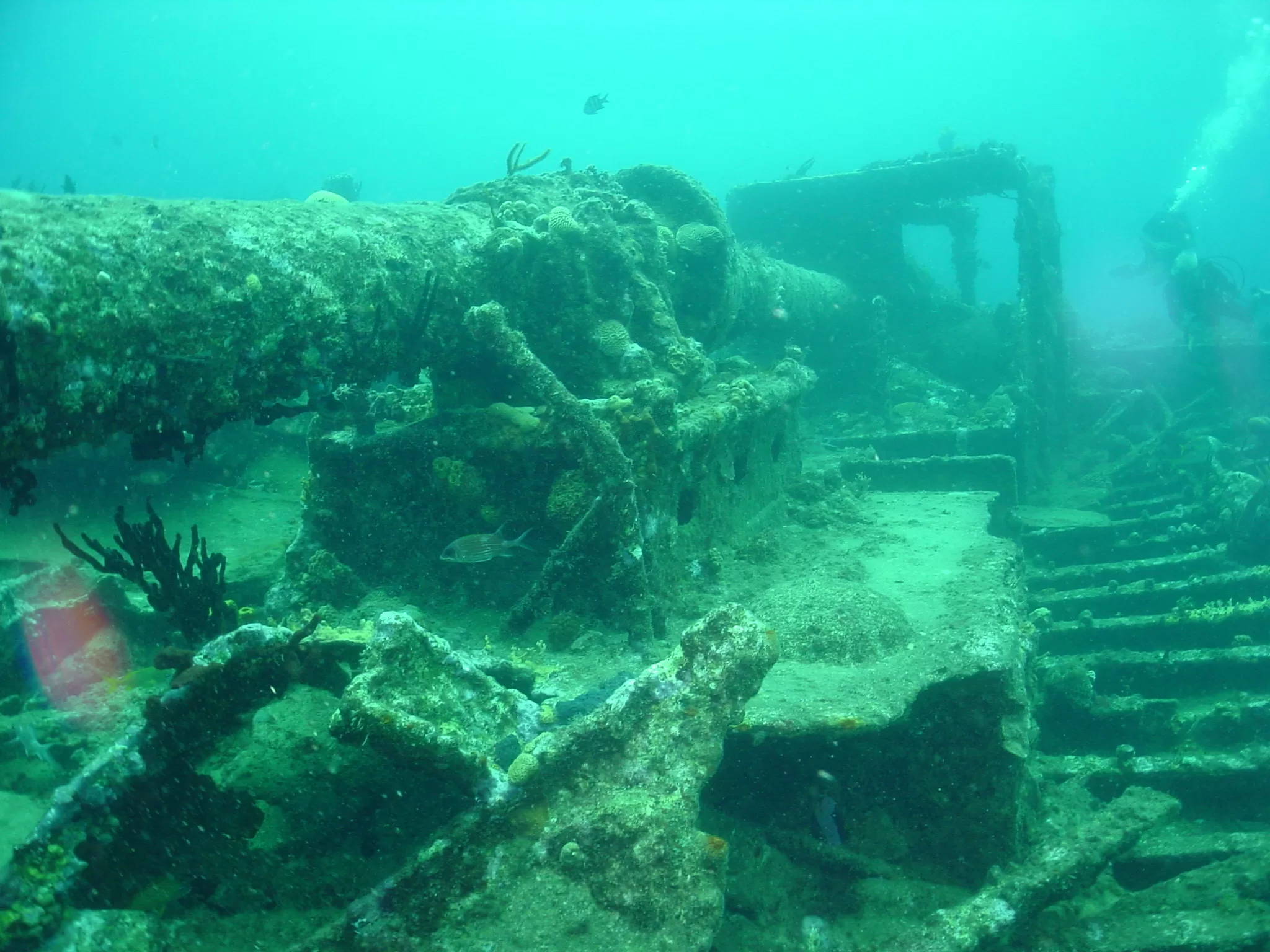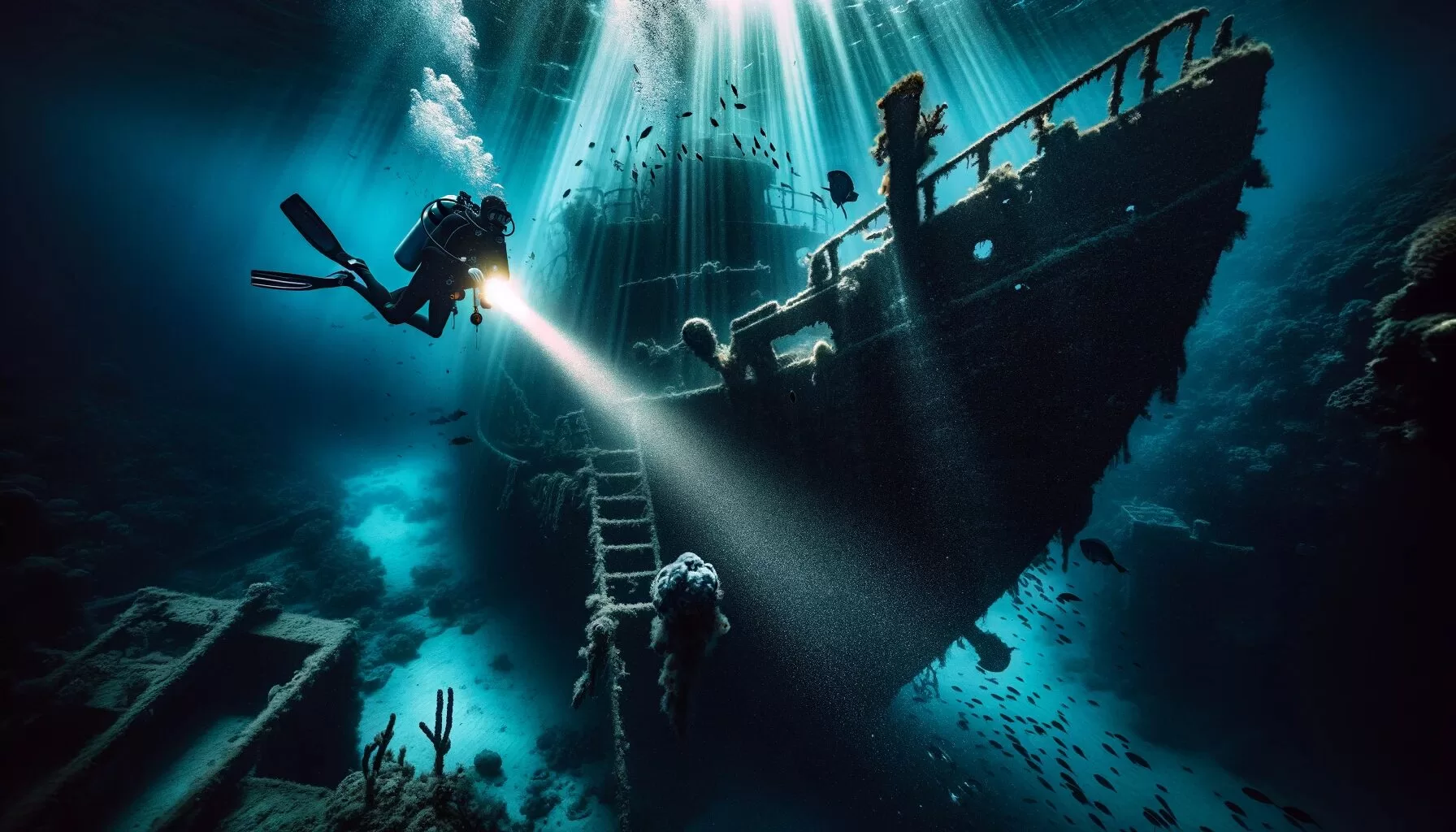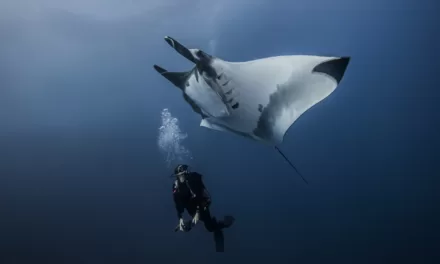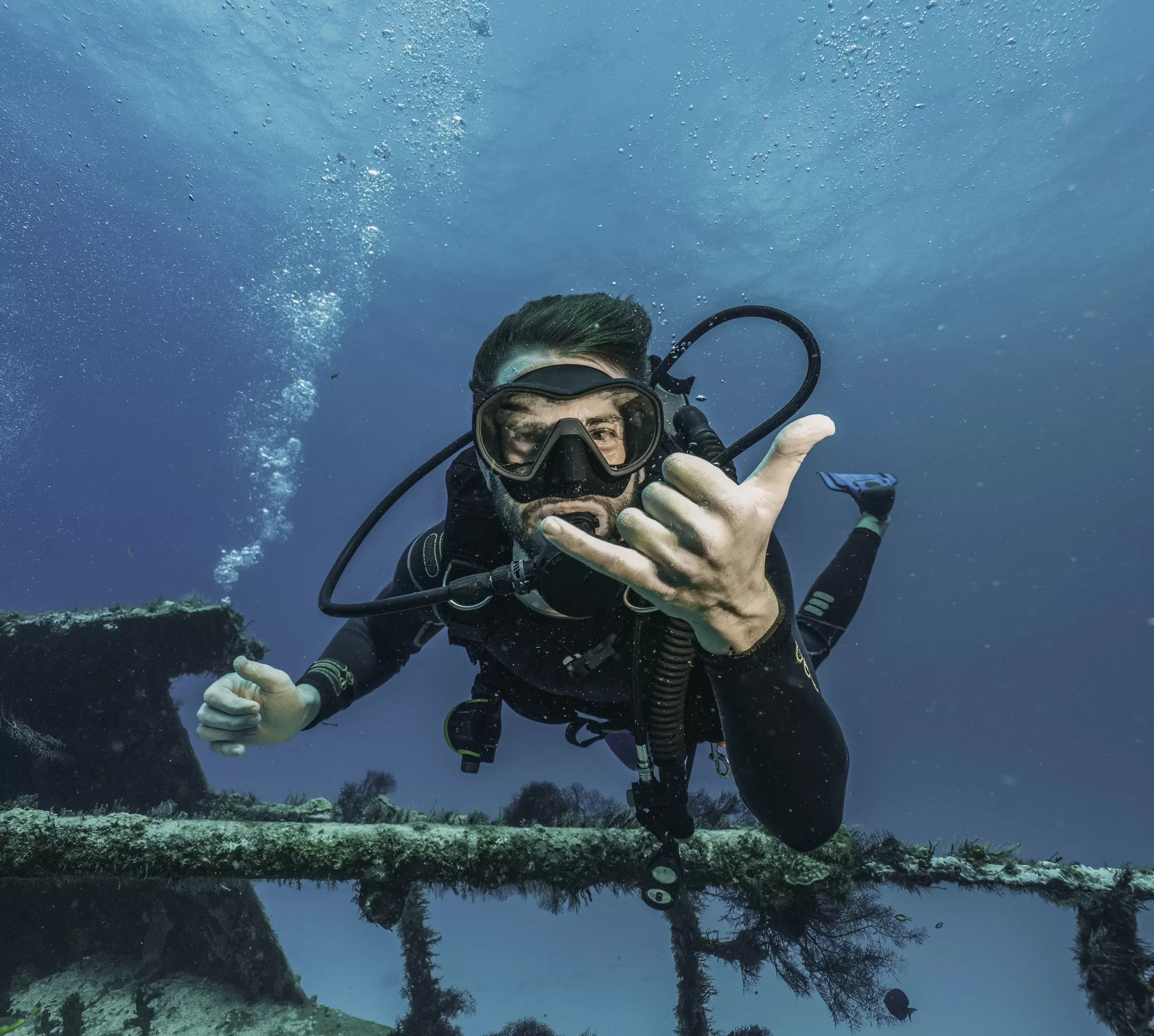Underwater exploration offers a unique and thrilling experience, providing an entirely new perspective on the world beneath the waves. Activities like scuba diving, snorkeling, free diving, and skin diving allow us to explore this underwater realm, each in its own unique way. Understanding the differences between these activities is crucial for several reasons. Firstly, it ensures the safety of the participants, as each activity requires different skills, knowledge, and equipment. Secondly, it enhances the overall enjoyment and satisfaction, as individuals can choose the activity that best suits their interests, abilities, and expectations. This blog post aims to delve into the specifics of scuba diving, snorkeling, free diving, and skin diving, shedding light on their distinct characteristics and helping enthusiasts make informed decisions about their underwater adventures.
Scuba Diving: A Journey Into the Deep
Scuba diving is a form of underwater diving where the diver uses a self-contained underwater breathing apparatus (SCUBA) to breathe underwater. Unlike other forms of diving, scuba diving allows for extended periods underwater, providing a unique opportunity to explore deeper waters and observe marine life up close.
The basic principles of scuba diving revolve around mastering buoyancy control, understanding dive planning, and learning how to operate the scuba equipment safely. Scuba divers carry their own source of breathing gas, usually compressed air, allowing greater freedom of movement and longer duration beneath the surface compared to breath-hold diving.
The equipment used in scuba diving is crucial for the safety and efficiency of the dive. This includes the scuba tank (to store breathing gas), regulator (to control gas flow), buoyancy control device (to manage depth), dive computer (to monitor depth and time), and appropriate exposure protection like wetsuits or drysuits.
Training and certification are mandatory for scuba diving. Beginners usually start with an entry-level certification course, such as the PADI Open Water Diver or NAUI Scuba Diver. These courses cover essential skills, safety procedures, equipment handling, and emergency response techniques. Advanced training and specialty courses are available for those looking to explore specific aspects of scuba diving, such as deep diving, night diving, or underwater photography. Certification ensures that divers have the necessary knowledge and skills to dive safely and responsibly, making it an integral part of the scuba diving experience.
Snorkeling: Skimming the Surface
Snorkeling is a popular water activity that allows individuals to observe underwater life in a natural setting without the extensive equipment and training required for scuba diving. It involves swimming at the surface of the water while equipped with a diving mask, a snorkel (a specially designed breathing tube), and usually swim fins. The key aspect of snorkeling is the ability to breathe while facing down at the surface, enabling the snorkeler to observe the underwater world with minimal effort and equipment.
The necessary equipment for snorkeling is relatively simple and accessible. A well-fitting diving mask provides clear vision underwater, while the snorkel enables breathing at the surface without lifting the head from the water. Swim fins aid in efficient movement through the water, allowing snorkelers to cover larger areas with less effort. Additional equipment may include a wetsuit for thermal protection in cooler waters and a life jacket or flotation device for additional safety.
Ideal locations for snorkeling are typically those with clear, calm waters, vibrant coral reefs, and abundant marine life. Shallow reefs are particularly popular, as they offer a plethora of visual delights close to the water’s surface. Some of the world’s best snorkeling destinations include the Great Barrier Reef in Australia, the Maldives, and the Caribbean islands. Conditions such as water clarity, minimal current, and diverse marine life are key factors in determining a good snorkeling site.
Free Diving: The Art of Breath-Holding
Free diving, also known as breath-hold diving, is the practice of diving underwater on a single breath, without the use of breathing apparatus like those used in scuba diving. This ancient art combines skill, discipline, and a deep understanding of one’s body and the marine environment. Free divers rely on their ability to hold their breath while exploring underwater, making it both a physical and mental challenge.
Techniques and training in free diving are essential for safe practice. Key techniques include breath control, efficient movement, and equalization (balancing the pressure in the ears and sinuses with the external pressure). Free diving training typically focuses on developing these skills, along with safety procedures and understanding the body’s response to pressure and breath-holding. Many free divers also practice yoga and meditation to improve breath control and mental focus.
Risks and safety measures are paramount in free diving, as it can be dangerous without proper training and precautions. Risks include shallow water blackout (loss of consciousness caused by a lack of oxygen), barotrauma (injury caused by pressure changes), and hypoxia (reduced oxygen supply to the brain). Safety measures include never diving alone, setting conservative depth and time limits, and thorough training in recognizing and managing potential dangers. Adherence to these safety practices ensures that free divers can enjoy the exhilarating experience of exploring the underwater world in its most natural form.
Skin Diving: A Blend of Snorkeling and Free Diving
Skin diving is an aquatic activity that combines elements of both snorkeling and free diving. It involves swimming at the water’s surface with snorkeling gear and making occasional dives underwater, holding one’s breath like in free diving. Skin divers typically explore shallower depths than free divers and do not go as deep as scuba divers, making it an ideal middle ground for those interested in both surface and underwater exploration.
Comparing skin diving with snorkeling and free diving, the key difference lies in the level of immersion and depth. While snorkeling is primarily a surface activity and free diving involves deeper, longer dives, skin diving strikes a balance between the two. It allows for more exploration than snorkeling but requires less training and equipment than free diving. This makes skin diving a versatile option for exploring underwater environments.
The skills and equipment needed for skin diving are similar to snorkeling but with an added emphasis on breath-hold techniques from free diving. Essential gear includes a snorkel, mask, and fins, with the option of a wetsuit for comfort in cooler waters. Practicing efficient swimming techniques, breath control, and equalization are crucial skills for skin diving, enabling the diver to make brief, safe dives to observe marine life and underwater features.
Choosing the Right Activity for You
Choosing between scuba diving, snorkeling, free diving, and skin diving depends on several factors. Physical fitness is important, as some activities like free diving and scuba diving require good health and endurance. Interest level and the type of underwater experience one seeks are also crucial. For instance, those interested in observing marine life at shallow depths may prefer snorkeling or skin diving, while those fascinated by deeper underwater exploration might lean towards scuba diving or free diving.
For beginners, it’s recommended to start with snorkeling as it requires minimal equipment and training. This provides a good introduction to underwater exploration without the need for extensive preparation. Beginners interested in pursuing more immersive experiences can then consider skin diving or free diving courses to build on their skills and comfort in the water. Scuba diving, while more equipment-intensive, offers the most in-depth exploration but requires formal training and certification. Ultimately, the choice depends on personal preferences, comfort levels, and commitment to learning and safety.
Conclusion
In this exploration of underwater activities, we’ve uncovered the unique aspects and shared qualities of scuba diving, snorkeling, free diving, and skin diving. Each offers a different way to experience the wonders beneath the waves. Scuba diving takes us deep into the ocean’s depths, snorkeling allows for easy surface exploration, free diving offers a pure, equipment-free dive experience, and skin diving blends aspects of both snorkeling and free diving for a versatile underwater adventure.
Ultimately, the choice of activity depends on individual preferences, physical capabilities, and the desire for exploration. While scuba diving requires extensive equipment and training for deep explorations, snorkeling is accessible and easy for most people. Free diving challenges one to push their physical and mental limits in breath-holding, whereas skin diving provides a balance between surface and underwater exploration. No matter the choice, each activity requires respect for the marine environment and adherence to safety practices. The underwater world is a fragile and beautiful place, offering endless marvels and mysteries for those willing to explore. By understanding and respecting these environments, we ensure they continue to thrive and inspire for generations to come.
FAQ Section
Q: Do I need to be certified to scuba dive?
A: Yes, a certification from a recognized diving organization is necessary to ensure safety and proficiency in scuba diving.
Q: Can snorkeling be done without any training?
A: Basic snorkeling can be enjoyed with minimal instruction, though familiarity with swimming and using snorkeling gear is recommended.
Q: How deep can you dive in free diving?
A: Depths in free diving vary based on skill, experience, and training. Beginners usually stay within shallow depths, while trained free divers can reach impressive depths.
Q: Is skin diving the same as snorkeling?
A: Skin diving is similar to snorkeling but includes brief dives underwater, unlike snorkeling, which is primarily a surface activity.
Q: What equipment do I need for skin diving?
A: Basic equipment for skin diving includes a snorkel, mask, and fins, with the option of a wetsuit for comfort.
Q: Are there age restrictions for these underwater activities?
A: Age requirements vary. For scuba diving, most organizations set a minimum age of 10-12 years. There are generally no strict age limits for snorkeling, free diving, and skin diving, but physical fitness and comfort in the water are important.
